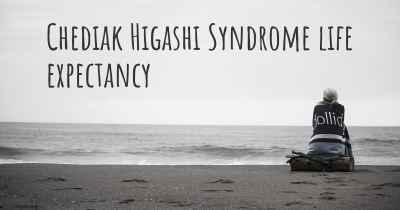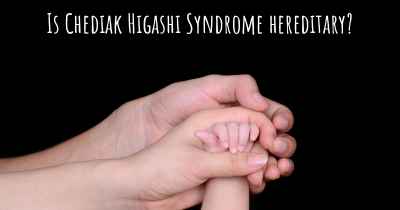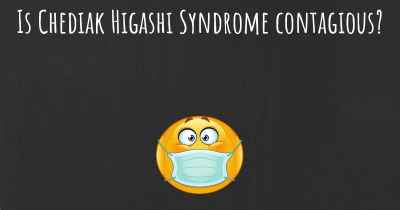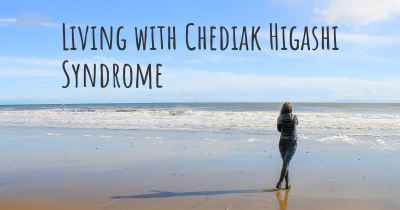What is the history of Chediak Higashi Syndrome?
When was Chediak Higashi Syndrome discovered? What is the story of this discovery? Was it coincidence or not?
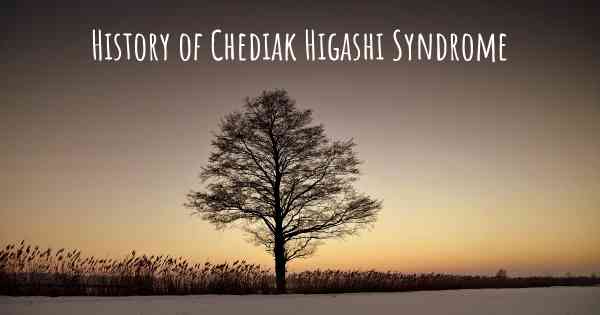
Chediak-Higashi Syndrome (CHS) is a rare autosomal recessive disorder that affects multiple systems in the body. It was first described by two scientists, Victor Almon McKusick and Carlos Chediak-Higashi, in the 1950s. The syndrome is characterized by a variety of symptoms, including partial albinism, immunodeficiency, and neurological abnormalities.
The history of CHS begins with the discovery of the disorder in a Puerto Rican family by Carlos Chediak-Higashi, a physician and researcher. In 1952, Chediak-Higashi encountered a 4-year-old girl with unusual clinical features, including pale skin, light hair, and nystagmus. He observed that her neutrophils (a type of white blood cell) contained large granules, which were later named "Chediak-Higashi granules."
Chediak-Higashi published his findings in 1952, but it wasn't until 1958 that Victor McKusick, an American physician and geneticist, recognized the familial nature of the disorder. McKusick studied a large Puerto Rican family with several affected members and confirmed the autosomal recessive inheritance pattern of CHS.
Over the years, researchers have made significant progress in understanding the underlying genetic basis of CHS. In the 1990s, the gene responsible for CHS was identified through genetic mapping studies. This gene, known as LYST (lysosomal trafficking regulator), was found to be mutated in individuals with CHS.
The LYST gene provides instructions for producing a protein called CHS1/LYST, which plays a crucial role in the normal function of lysosomes. Lysosomes are cellular structures involved in the breakdown and recycling of various molecules. In CHS, mutations in the LYST gene lead to abnormal lysosome function, resulting in the accumulation of large vesicles within cells.
These enlarged vesicles, known as "giant lysosomes," are responsible for the characteristic Chediak-Higashi granules observed in various cell types, including neutrophils, melanocytes, and platelets. The presence of these granules affects the function of these cells, leading to the clinical manifestations of CHS.
Chediak-Higashi Syndrome is a multisystem disorder, and its symptoms can vary widely among affected individuals. The most prominent features include partial albinism, which results from impaired melanin production in the skin, hair, and eyes. Individuals with CHS often have fair skin, light-colored hair, and reduced pigmentation in the iris.
Immunodeficiency is another significant aspect of CHS. The abnormal function of immune cells, such as neutrophils and natural killer cells, predisposes individuals to recurrent bacterial and viral infections. Additionally, CHS patients may experience abnormal bleeding and bruising due to platelet dysfunction caused by the presence of Chediak-Higashi granules.
Neurological abnormalities are also common in CHS. These can include intellectual disability, developmental delay, seizures, and ataxia. The exact mechanisms underlying these neurological manifestations are not fully understood, but it is believed that abnormal lysosome function in neurons contributes to their development.
Although there is currently no cure for CHS, treatment focuses on managing the symptoms and complications associated with the disorder. This may involve prophylactic antibiotics to prevent infections, blood transfusions to address bleeding disorders, and supportive therapies to address neurological symptoms.
Research into CHS continues to advance our understanding of the disorder. Animal models, such as mice with LYST mutations, have been instrumental in studying the pathophysiology of CHS and testing potential therapeutic approaches. Gene therapy and stem cell transplantation are among the emerging treatment strategies being explored.
In conclusion, Chediak-Higashi Syndrome is a rare genetic disorder that was first described in the 1950s. The discovery of the CHS1/LYST gene and the identification of Chediak-Higashi granules have provided crucial insights into the underlying mechanisms of the syndrome. Ongoing research aims to improve diagnosis, treatment, and ultimately find a cure for this complex disorder.
